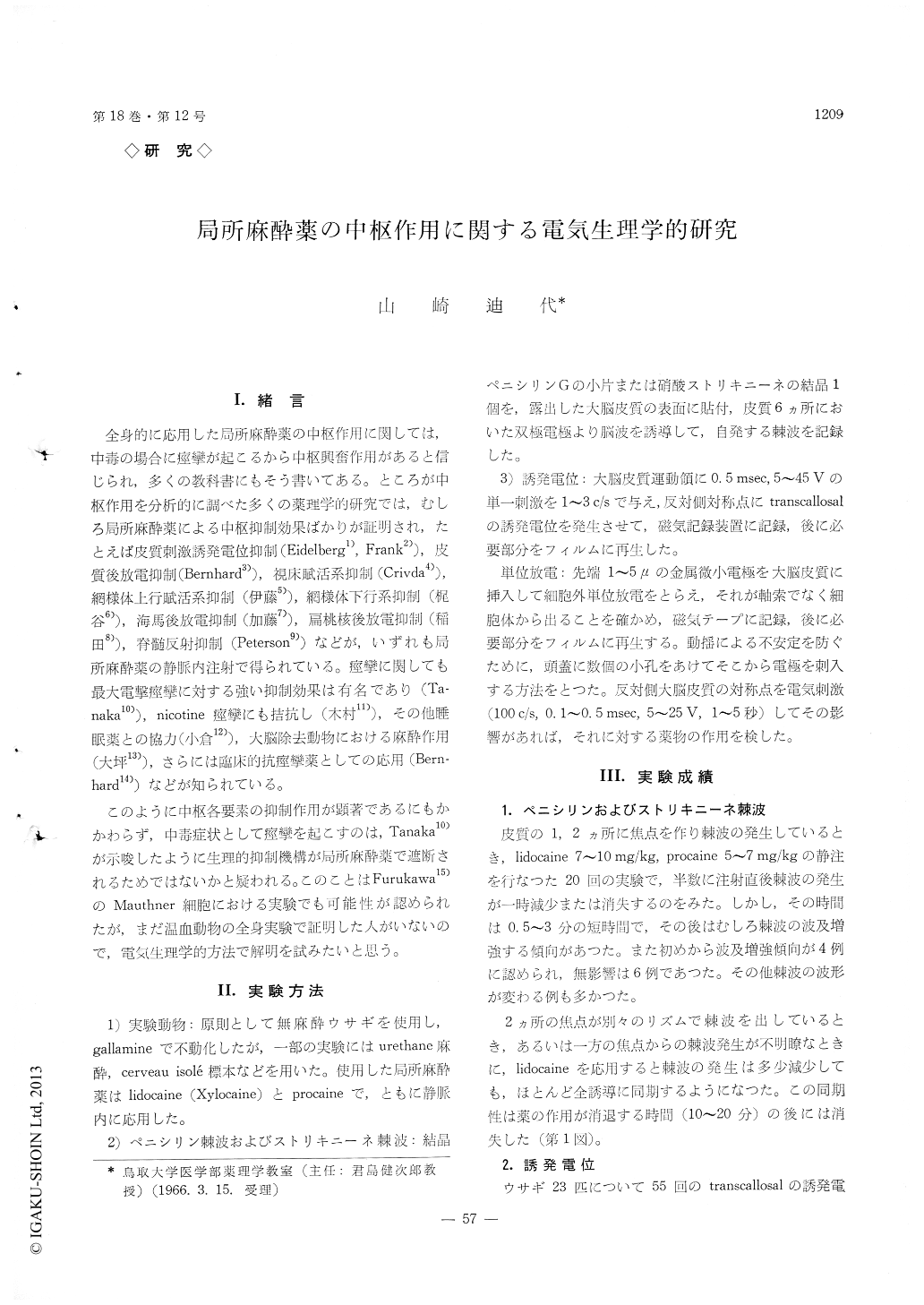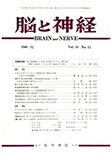Japanese
English
- 有料閲覧
- Abstract 文献概要
- 1ページ目 Look Inside
I.緒言
全身的に応用した局所麻酔薬の中枢作用に関しては,中毒の場合に痙攣が起こるから中枢興奮作用があると信じられ,多くの教科書にもそう書いてある。ところが中枢作用を分析的に調べた多くの薬理学的研究では,むしろ局所麻酔薬による中枢抑制効果ばかりが証明され,たとえば皮質刺激誘発電位抑制(Eidelberg1), Frank2),皮質後放電抑制(Bernhard3)),視床賦活系抑制(Crivda4)),網様体上行賦活系抑制(伊藤5)),網様体下行系抑制(梶谷6)),海馬後放電抑制(加藤7)),扁桃核後放電抑制(稲田8)),脊髄反射抑制(Peterson9))などが,いずれも局所麻酔薬の静脈内注射で得られている。痙攣に関しても最大電撃痙攣に対する強い抑制効果は有名であり(Ta—naka10)),nicotine痙攣にも拮抗し(木村11)),その他睡眠薬との協力(小倉12)),大脳除去動物における麻酔作用(大坪13)),さらには臨床的抗痙攣薬としての応用(Bern—hard14))などが知られている。
このように中枢各要素の抑制作用が顕著であるにもかかわらず,中毒症状として痙攣を起こすのは,Tanaka10)が示唆したように生理的抑制機構が局所麻酔薬で遮断されるためではないかと疑われる。このことはFurukawa15)のMauthner細胞における実験でも可能性が認められたが,まだ温血動物の全身実験で証明した人がいないので,電気生理学的方法で解明を試みたいと思う。
The reason why local anesthetics in a toxic dose manifesta central nervous excitation or convulsion has so far remained obscure in spite of various pharmaco-dynamic studies.
Extracellularly unit firings of a cortical neurone at the sensory-motor area in unanesthetized rabbits immo-bilized with gallamine were recorded. In some neu-rones the transcallosal stimulation induced complete blocking of spontaneous firings. Intravenous injection of a small dose of lidocaine abolished or attenuated the effect of stimulation, and perfect recovery follow-ed it. In other neurones the transcallosal stimulation caused a marked increase in firings, and lidocaine in-jected in the same dose did not block this effect, whereas a large dose partly inhibited the excitatory effect.
These results indicate that inhibitory synapses of cortical neurones are selectively blocked by lidocaine administered intravenously and excitatory synapses are more resistant to the drug. The mechanism of cor-tical excitatory action of local anesthetics is thus in-terpreted, and the gap between behavioral observations and analytical experiments seems to be filled.

Copyright © 1966, Igaku-Shoin Ltd. All rights reserved.


